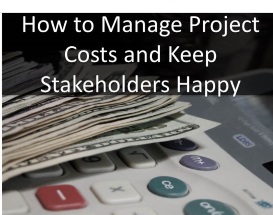
With experience, project costs are more easily and accurately estimated. However, it is a very rare occasion indeed that actual project costs will exactly match the estimated amount. Most commonly, actual costs will come out above estimates, but a large surprise either way will do nothing for a client’s confidence in a project manager’s ability. Here we look at why costs overrun, and how the project manager can manage project costs (and client expectations) throughout the lifetime of the project.
Estimate errors – the major causes
The main reason for bad estimates is bad planning. Estimates are rushed, or ballooned for budget purposes, or low-balled to win business. Whatever the reason, there will be tough conversations to be had down the line.
Of course, there are also many other reasons why project costs might overrun. The price of materials may change, fuel costs rise, or work packages become delayed. Clients may alter project parameters, meaning the cost basis changes. In an ideal world, once the project has been specified and signed-off there should be no changes: but a number of things may alter the project scope, including:
- Errors and omissions
- Technological changes
- Project enhancements
In short, if the project scope changes; or the estimate has not been well-constructed in the first place; or costs of materials and labour change through the course of the project, there will be difficult conversations required with stakeholders and clients.
Three steps to effective project cost management
A project manager is the middleman between the client and the contractors working on the project. Any cost differences should be immediately identified and flagged. Having used the work breakdown structure to accurately estimate costs and time requirements through to project completion, the project manager should take these three steps to avoid those difficult cost conversations:
- Analyse and compare costs
Regularly monitor costs, comparing actual against the planned budget at every stage of a project.
- Control change requests
Ensure all changes are monitored through an effective change control process. Any and all changes should be identified, documented, and analysed for impact and then improved where possible.
- Report cost differences to all stakeholders
All changes to estimates should be reported to all stakeholders, with updated project documentation included.
Monitor costs and keep the client satisfied
Conversations about cost overruns don’t have to be difficult and embarrassing. The first step, of course, is to ensure your cost estimates are as accurate as possible when first made. However, there are so many variables in a project that cost overruns are almost inevitable. Minimise these by careful analytical and change request procedures, ensuring prompt reporting of any budget impact, and nasty cost surprises will be avoided.
